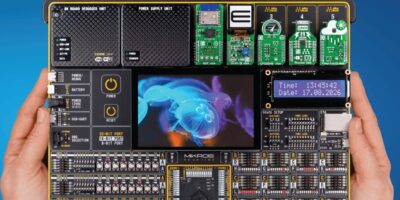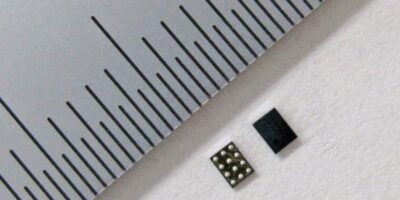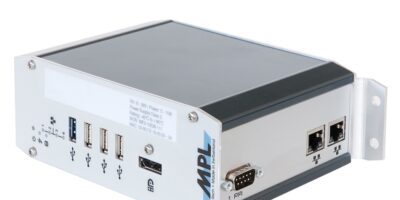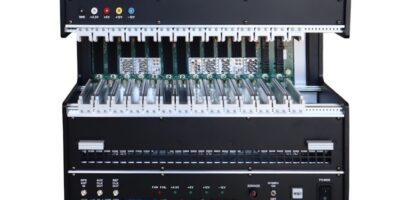Among the features in the UNI-DS v8 universal development board, MikroElektronika (Mikroe) has included a SiBrain socket to support a choice of microcontrollers and peripherals and over 1,200 add-on boards.
The board is designed for rapid prototyping and the SiBrain socket enables designers to try different microcontrollers in a prototype system without having to invest in other expensive hardware or learn new tools. SiBrain is the open standard for sockets and add-on boards and currently supports more than 3,300 different microcontrollers from a range of families including STM32, Kinetis, TIVA, CEC, MSP, PIC, dsPIC, PIC32, and AVR. Over 100 SiBrain add-on boards are currently available in Mikroe’s online store.
The UNI-DS v8 board has five mikroBUS sockets into which can be placed any of the company’s Click boards. These add-on boards save developers time by eliminating the need for the testing and troubleshooting during the prototyping phase. They cover functions including mixed-signal, wireless connectivity, storage, interface, displays, human machine interface, adapter, clock and timing, motor control, power management, and audio and voice.
The UNI-DS v8 integrates CodeGrip, believed to be the first programmer and debugger over Wi-Fi. Designers can place a UNI-DS v8 development board almost anywhere while still retaining full debugging and programming access, even in difficult-to-access sites such as agricultural settings, high-rise buildings and hazardous environments. CodeGrip supports more than 3,300 microcontrollers from different vendors. Free updates are provided as new microcontrollers and vendors are added.
Nebojsa Matic, CEO at Mikroe commented: “The ability to remotely program and debug over Wi-Fi (USB connection is also possible) plus the integration with Necto Studio, the . . . vendor-independent integrated development environment (IDE), means that prototyping has never been easier, no matter where you are or what level of resource you have.”
In 2011, MikroElektronika (Mikroe) invented the mikroBUS development socket standard and the compact Click Boards that use the standard to dramatically cut development time. Now the company offers 1,000 Click and the mikroBUS standard is included by leading microcontroller companies such as Microchip, Renesas and Toshiba on their development boards. SiBrain is Mikroe’s latest standard, for microcontroller development add-on boards and sockets. MikroElektronika also claims to make the world’s widest range of compilers and provides development environments, development boards, smart displays and programmers and debuggers.







